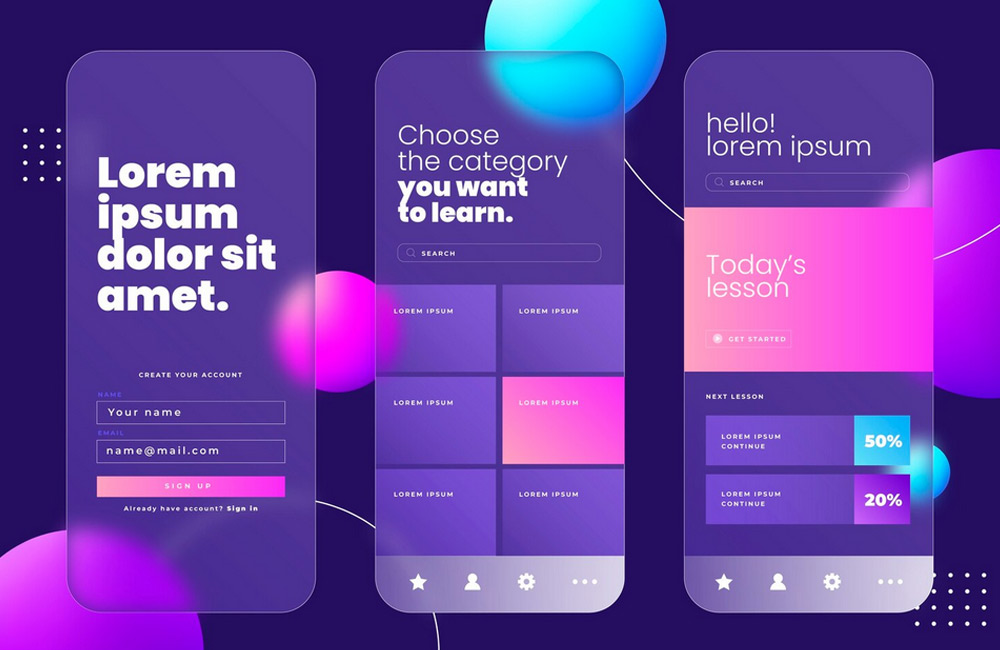The User Interface (UI) refers to the graphical interface through which a human interacts with a digital system – be it a website, app, or software. It is the visible link between the user and the technology and largely determines how easy or difficult it is to use an application. A successful UI combines aesthetics with functionality and ensures digital experiences feel natural and enjoyable. It forms the foundation for any successful online interaction.
What Does the User Interface Include?
The User Interface includes all visual and interactive elements that the user sees and uses to navigate or perform actions. A well-thought-out UI provides structure and clarity – guiding the user subconsciously. Every detail, from icons to font size, contributes to the overall experience and influences whether a visitor stays or leaves.
- Navigation elements such as menus, buttons, or search fields
- Text, icons, colors, and fonts – creating recognition and brand identity
- Layout structures and page content organization
- Forms, sliders, checkboxes, or dropdowns for interactions
- Visual feedback – e.g., loading indicators, confirmations, or hover effects
A good UI ensures users can intuitively understand a page’s logic. Modern tools like WOW.js are especially helpful, enabling subtle scroll animations and dynamic effects. These animations guide attention without overwhelming the user.
Why Is Good UI Important?
Good user interface design is key to a positive user experience. It determines whether visitors feel comfortable on your website and how long they stay. When design and usability work hand in hand, a natural flow emerges, building trust and easing actions. Users who feel well-supported engage more and are more likely to become customers.
A well-designed UI:
- guides the user through content and indicates next steps,
- builds trust through a professional and consistent appearance,
- reduces errors and frustration through clear structure and feedback,
- enhances user experience (UX) and boosts long-term conversion rates.
Harmonious interplay of design, function, and emotion is essential. Users remember not only what they saw, but how it made them feel.
The Difference Between UI and UX
While User Interface (UI) describes “how something looks,” User Experience (UX) focuses on “how it feels.” UI is therefore part of UX – providing the visual and functional foundation for positive user experiences. A beautiful but impractical interface is ineffective – just as a functional but unattractive application is. True satisfaction arises from the combination of both disciplines.
Professional designers therefore combine UX strategy and UI design to create digital products that not only work but delight. Here you can find further information on best practices and principles of modern UI design.
Conclusion
The User Interface is far more than just design – it is the decisive factor in whether a website or app is understandable, pleasant, and effective. A good UI combines aesthetics, structure, and intuition into a unified experience that builds trust and improves user experience sustainably. Regularly testing your UI, integrating feedback, and consciously applying design trends ensures every digital interaction becomes a positive experience.
Image: freepik.com

